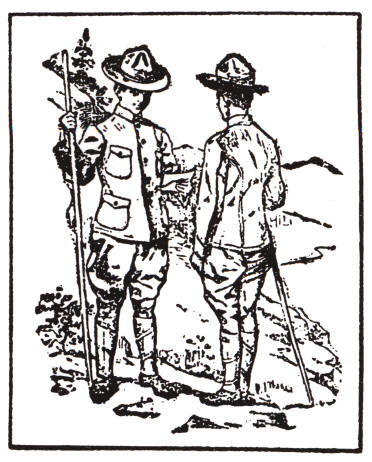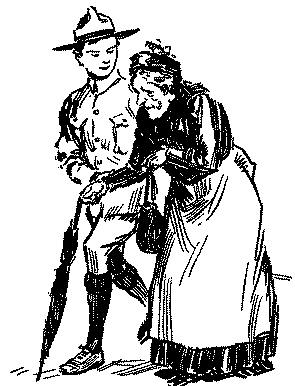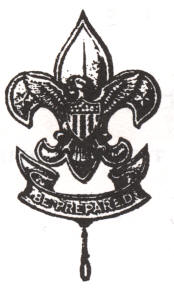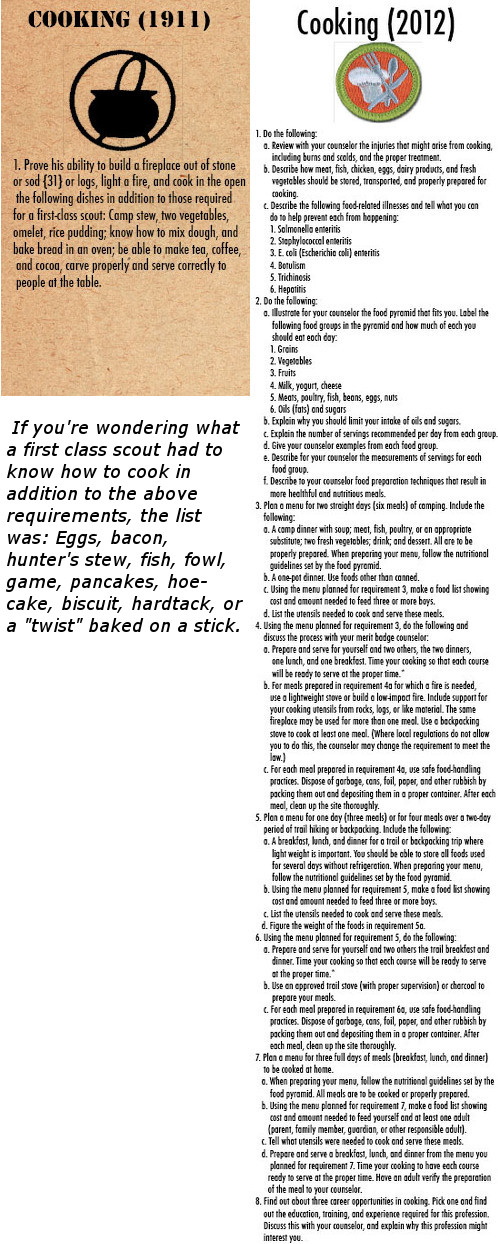I’ve apologized a fair amount for stupid and/or ignorant and/or insensitive things that I have done or said over the course of my life. This has has given me the time and experience to, if not perfect the form of an apology, then to at least get it to a point where I am comfortable that the apology will be understood as genuine. Perhaps at some point in the near future you’ll need to apologize for some stupid and/or ignorant and/or insensitive thing you have done. Here are thoughts I have for you on the subject.
First thing: What is an apology? Leaving aside classical definitions that are not directly on point to how the word is used in everyday life:
An apology is an admission that you’ve wronged others and that you are actually sorry for it. This is of course why it’s difficult for people to apologize. No one likes to admit they are wrong or that they screwed up. No one likes the complicated, defeated feelings that come with being wrong and screwing up. No one likes having to go to other people, publicly or privately, and admit to them they’ve been wrong and have screwed up. It is, literally, humiliating, since apologizing almost always requires humility and a willingness to put the needs of those you have wronged over your own. For ego-bound creatures, and we are all ego-bound, this is a hard thing to do.
I think it becomes less hard, however, if you consider the following:
One, everyone’s wrong at some point. Because, hello, you’re a human, and humans are imperfect beings. It’s okay to recognize you are not infallible.
Two, it’s better to center your ego on doing what’s right rather than never being wrong. Because, per point one, you’re going to be wrong at some point.
Three, it takes strength to apologize and apologize well. Any jackass can refuse to apologize when they are in the wrong; indeed, refusing to admit you’re wrong, or to apologize it, is one of the hallmarks of being a jackass. Being willing to stand up and say “I screwed up, I’ve wronged you and I am sorry for it,” on the other hand, means you have the strength of character to own your actions, and the consequences of them, both for others and yourself.
Okay, now we know what an apology is.
So, let’s say that you’ve said/done something, publicly or privately, that has genuinely upset someone (or more than one someone). Should you apologize? Ask yourself the following questions:
Are you actually sorry? If the answer is “no,” then you shouldn’t apologize, because your apology will be totally insincere. An insincere apology is worse than no apology at all; not only is it obvious that you’re not sorry for the original act, but the fake apology suggests that you think people are stupid enough to believe a fake apology. Congratulations, you’ve just made yourself look like an even bigger assbag.
If you are actually sorry, then ask yourself this:
Are you primarily sorry for yourself, or for others? This is the classic “are you sorry you screwed up, or that you got caught?” question. Meaning that if the nexus of your concern is your reputation, your standing, and your status, then your apology is likely to reflect that. In which case, I have news for you: your apology will come across as “I’m sorry the rest of you ganged up on me,” and I assure you that’s not going to go over very well.
If on the other hand your primary concern is that your actions have affected others negatively, then the focus of your apology will reflect that, and those you have wronged will more likely appreciate that you see the problem is not what’s being done to you, but what you have done to others.
I want to be clear I think it’s fine if you are concerned for your own standing; we’re ego-driven creatures, and damage control is a fine thing. The point here is to understand where the balance is. Remember that an apology is about owning up to what you’ve done to others. Making your apology all about you, or primarily about you, is missing the point of an apology.
Another question:
Are you willing to let your apology be an apology? Meaning, once you’ve apologized, are you going immediately start backtracking from it, adding caveats, exclusions, conditions and defensive annotations? It’s remarkable the number of perfectly good apologies that don’t stick the dismount. People can’t leave them alone, I suspect, because of defensiveness and ego — yes I was wrong but you have to admit I’m not the only one who was wrong here, or yes I was wrong but in general you have to admit my point still stands, or even yes I was wrong but it was wrong of you to make a big deal out of it. Which, again, is going to make things worse.
If you can’t just apologize, perhaps you should not apologize.
A final point for this part, not in the form of a question but still important to know:
An apology is directed toward other people, but is something you do for yourself. Which is to say, the reason to apologize is not because other people expect it from you (although they may), but because you expect it from yourself — it is part of your personal character to own up to the wrongs you have done to others. If you’re apologizing solely because of outside expectation, the apology is going to be hollow at its core. The best apologies are the ones where the moral actor for the apology is the one who is saying “I apologize.” This can be learned, fortunately.
We’re done with the preliminaries now, and you’ve decided that you should apologize. To my mind, an apology has three steps to it, which are pretty simple and straightforward.
1. Briefly, specifically and factually recount the action you’re apologizing for. You’ve done something wrong. Say what it is. Don’t try to mitigate or defend, just get it out there.
2. Acknowledge that you wronged others. Again, don’t mitigate or defend. Acknowledge it and say it.
3. Apologize unreservedly. Don’t drag it out. Don’t qualify it. Say it, own it. Let it be there.
That’s the basic format.
Some style notes:
Apologies are active. Use the active voice. “I did this,” is far stronger, and indicative of personal responsibility, than “this thing happened.” A passive voice in an apology comes across as a denial of responsibility or accountability. Don’t do that. As a subset:
The offense is yours. Own it. “I am sorry I offended you” acknowledges the screw-up is yours, “to those who were offended, I am sorry,” sounds like you’re suggesting the responsibility for the offense should be shared, and “I’m sorry if you feel offended,” is palming off the responsibility entirely on the other person (and makes you sound like an unrepentant jackass).
Don’t try to be funny or clever. The failure mode of “clever” is “asshole.” An apology is an attempt to own up to what you’ve done wrong. It’s the last place in the world you want your communication to fail, and it’s not a piece of communication that needs spicing up. Save your funny and clever side for something else.
Be upfront and to the point. To use a journalism term, don’t bury your lede. Brevity does not mean insincerity.
Don’t dilute your apology. Don’t add it into something else, don’t sweep by it to go on to other topics. Let it be its own thing and make sure you make it clear what you’re doing and way. You don’t have to dwell on it, but you have to give it its moment.
Here is an example of an apology done as suggested above. Let’s say I have made an ass of myself to my friend “Joe” by, say, making a joke about cancer when a loved one of his has just passed away from the disease. Here’s how I would apologize.
Dear Joe:
Yesterday I made a cancer joke in front of you, and as a result I caused you pain. I didn’t intend to hurt you that but I did it anyway, and the responsibility for that is mine. I am genuinely sorry I hurt you. I will try very hard not to do it again. I’m here if you want to talk to me. Let me know – JS
Simple, direct and to the point. Joe doesn’t have any doubt what I’m apologizing for or that I take responsibility for it.
Now that you’ve apologized, is everything done and over and hunky dory? Not necessarily. Some after-apology points to consider.
1. An apology is not self-administered absolution. You apologize to acknowledge a wrong you’ve done to others, but simply acknowledging that wrong doesn’t mean you’re now off the hook for it. It helps substantially if you’re willing do do a little legwork on the matter, from something as simple as letting that other person know you’re there to talk (see the last sentence in the apology to “Joe”) to something as life-changing as making an effort to adjust your worldview. Don’t be the guy who says “Hey! I said I was sorry!” and expects it to settle all dispute. If that guy is over the age of ten, he doesn’t get as much credit for that statement as he wants.
2. You should accept that your apology may not be accepted. And that it may not be accepted for any number of reasons. Maybe it was poorly phrased and came out as defensive, even if you didn’t mean it to be. Maybe those you’ve wronged feel an apology isn’t enough and want to see what you do next. Maybe you’re the third person today to apologize to them for something and are simply all out of forgiveness for the day. Maybe you don’t get an explanation at all.
Point is, this is not something that’s in your control, nor should you pretend it is. This is one reason why I strongly believe that while an apology is offered to others, it is what you do for yourself — because the only person whose response to the apology you have control over is you. If you apologize and the apology is not accepted, then you have still acknowledged your error, and that’s not trivial.
It’s all right to hope an apology is accepted and forgiveness given — and to ask for it if you would like to. It shouldn’t be a primary reason to offer it. And you should keep in mind that its acceptance is a gift freely given, and not a requirement.
3. Apologizing and making the same mistake a second time is worse than not apologizing at all. Because it suggests that you’ve learned nothing and that your apology was really just an exercise in going through the motions. Which is to say apologies are not merely the end of a bad situation. They are the beginning of a promise to do (and be) better.
If you’re visibly making the effort to do and be better, if (and likely when) you screw up again, you will still have credit from that previous apology. If you’re not making that effort, if (and almost certainly when) you screw up again, you will not. Quite the opposite, in fact.
So: When you apologize, mean what you say. Back it up. Move forward with it. And do it for you, to the benefit of others. That’s how you make an apology stick.















































.jpg)
.jpg)


